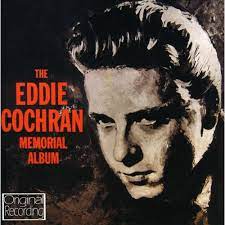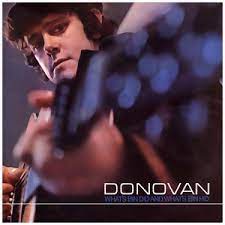Tutorial Pricing: $3.25ea OR any 10 for $10
(use code "Any10410" at checkout)
Paid Requests for $25ea
(comes with any 8 freebies -> so 9 for $25)
100's Of Free Demos & Chord Sheets
Songs of Neil Sedaka
A Journey Through Timeless Hits
In this musical journey, we'll delve into the songs of Neil Sedaka world, exploring his remarkable career, his most famous songs, albums, and even provide you with some chords and lyrics to help you play his timeless tunes. So grab your guitar, and let's get started!

If you're a prospective guitarist with a love for the music of the 1960s, you're in for a treat. Neil Sedaka, a legendary artist of that era, has left an indelible mark on the music world with his catchy, up-tempo, and vibrant songs that are perfect for sing-alongs around the campfire or in your favorite pub.
Below are several great Neil Sedaka songs you can easily learn on the acoustic. View my demos and download the free .pdf chord sheets.
I've included Neil Sedaka album covers so you know where each song originated. If you need or want to purchase the full lesson, it's available for a few bucks or less with a bulk purchase.
Jump links to quickly access to Neil Sedaka songs sections.
Who is Neil Sedaka?
Neil Sedaka is an American pop singer, songwriter, and pianist who rose to prominence in the late 1950s and early 1960s. Born on March 13, 1939, in Brooklyn, New York, Sedaka showed an early aptitude for music and began his classical piano training at the age of eight. His talent and passion for music soon led him to a career that would span decades.
The Highlights of Neil Sedaka's Career
Neil Sedaka's career has been a colorful journey filled with remarkable achievements and contributions to the world of music. Here are some of the highlights:
Early Success: Neil Sedaka's career took off when he partnered with lyricist Howard Greenfield. Together, they wrote numerous hit songs, including "Stupid Cupid" and "Breaking Up Is Hard to Do."
Chart-Topping Hits: Sedaka scored numerous chart-topping hits in the late 1950s and early 1960s, including "Calendar Girl," "Oh! Carol," and "Happy Birthday Sweet Sixteen."
Resurgence: In the 1970s, Neil Sedaka experienced a resurgence in his career with hits like "Laughter in the Rain" and "Bad Blood."
Songwriting Icon: He is not only known for his own performances but is also recognized as a prolific songwriter for other artists.
Awards and Honors: Neil Sedaka has received numerous awards and honors throughout his career, including induction into the Songwriters Hall of Fame.
Now that you have a glimpse of Neil Sedaka's impressive career, let's dive into some of his most famous songs and albums.
Songs Of Neil Sedaka
Lyrics, Chords, Demos & Tutorials
1. Breaking Up Is Hard To Do
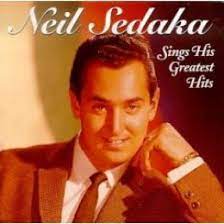
Breaking Up Is Hard To Do was co-written by Neil Sedaka and Howard Greenfield in 1962 and became one of Sedaka's signature hits.
Released as both an upbeat doo-wop tune and later as a slow ballad, it captures the pain of heartbreak with its iconic chorus. The song reached No. 1 on the US Billboard Hot 100 and became an anthem for those going through breakups.
Sedaka's 1975 disco-inspired re-release also charted at No. 8. Covered by artists like The Carpenters and Lenny Welch, it remains a classic, frequently featured in movies, TV shows, and on the radio.
For this one play a down down up down down up down up and repeat rhythm pattern in standard tuning. Some lead required here with the chords G, Em, C, D, D7, B7, A7, Gm, Fmaj7, Fm, A# and D#.
Jump To Top
2. Calendar Girl
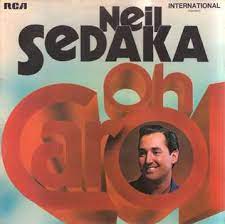
Calendar Girl was a collaboration by Neil Sedaka and Howard Greenfield in 1960 and became a hit, reaching No. 4 on the US Billboard Hot 100.
Known for its lively tempo and catchy melody, the song captures the excitement of young love as the singer compares his beloved to a "calendar girl," someone he adores every month.
This early pop classic highlights Sedaka's distinctive tenor and became one of his memorable hits, alongside "Happy Birthday Sweet Sixteen" and "Breaking Up Is Hard to Do."
Featured in various films and TV shows, it remains a fan favorite and has been widely covered over the years.
I like to play a drop D tuning here with some lead while playing the chords D, Bm, G, A7, Ddim and B7. For rhythm play a down up down up with some walking bass blended into the rhythm.
Jump To Top
3. Happy Birthday Sweet Sixteen
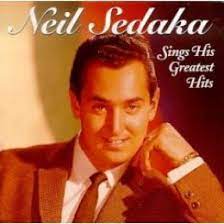
Happy Birthday Sweet 16 was released in 1961and was co-written by Neil Sedaka and Howard Greenfield.
Sedaka, then a high school friend of Carole King, created a catchy, celebratory tune perfect for birthdays. The song, reminiscent of King's hits "Take Good Care of My Baby" and "One Fine Day," tells of a young man's love for a girl turning sixteen. It reached No. 6 on the US Billboard Hot 100 and No. 3 in the UK.
This early pop classic showcases Sedaka's distinctive tenor and became a staple for birthday celebrations, later covered by artists like Connie Francis and The Crests.
For this one play a down down up down up down up and repeat in standard tuning and be prepared for some lead work. Use the chords G, Em, Am, D7, B7, G7, Edim, E7, C and an E7.
Jump To Top
4. Laughter In The Rain
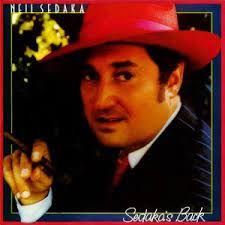
Laughter In The Rain written by Neil Sedaka and Phil Cody, became a major comeback hit for Sedaka in 1974, reaching No. 1 on the US Billboard Hot 100.
Originally released by Lea Roberts, Sedaka asked Elton John's label, Rocket Records, to prioritize his version, believing it would be a hit. The song, with its catchy melody and romantic lyrics, tells of a man reminiscing about a rainy-night encounter that still brings him joy.
Sedaka’s version, known for its lush orchestration, won a Grammy for Best Male Pop Vocal Performance in 1975 and remains his definitive version. Notably, Cody wrote the lyrics in just five minutes after a nap under a tree.
I play a capo 3rd fret on this one in standard tuning while playing a root down up down up root up down up and repeat rhythm pattern. Some picking required with the chords D, Gmaj7, A7sus, A7, Bm, Esus, E, Gm, C, Fmaj7, Dm, A# and a Dmaj7.
Chords & Lyrics
Jump To Top
5. Next Door To An Angel
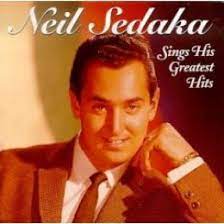
Next Door to an Angel is from Neil Sedaka and Howard Greenfield, and recorded by Sedaka in 1962. The song was released as a single and became a hit, peaking at No. 5 on the US Billboard Hot 100 chart.
The song is a classic example of Sedaka's early pop style, featuring his distinctive tenor vocals and catchy melodies. "Next Door to an Angel" tells the story of a teenage boy who has a crush on a girl who lives next door. The boy dreams of being with her and imagines what it would be like to be her boyfriend. The song has a sweet and innocent feel that captures the essence of young love.
"Next Door to an Angel" was one of several hits that Sedaka had in the early 1960s, including "Calendar Girl," "Happy Birthday Sweet Sixteen," and "Breaking Up Is Hard to Do." The song remains a favorite among fans of Sedaka's music and is often included on compilations of his greatest hits.
For rhythm here you'll play a root down up root up down up pattern with the chords G, Em, Am, D7, E7, Adim, Dm7, G7 and a Cmaj7. No lead in this one played in standard tuning and I'm playing a capo 2nd fret.
Chords & Lyrics
Jump To Top
6. What A Surprise
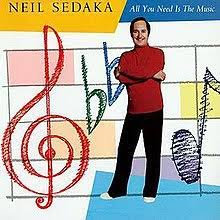
What a Surprise is from his 1978 album "All You Need Is Music."
"What a Surprise" is a mid-tempo pop song that features Sedaka's trademark catchy melody and upbeat lyrics. In the song, Sedaka sings about unexpectedly falling in love and being surprised by his feelings.
The song was not released as a single, but it remains a favorite among fans of Sedaka's music.
There was also no music video released for this song.
This has a root down up down up down up and repeat rhythm pattern with some walking bass in the chorus. A bit of lead in here with the chords D, F, Em, A, D7 and a G played in standard tuning and a capo 1st fret for the original key.
Jump To Top Of Songs Of Neil Sedaka
If you liked this songs of Neil Sedaka page you might also like ... (click images)
Popular Songs From The 60s
